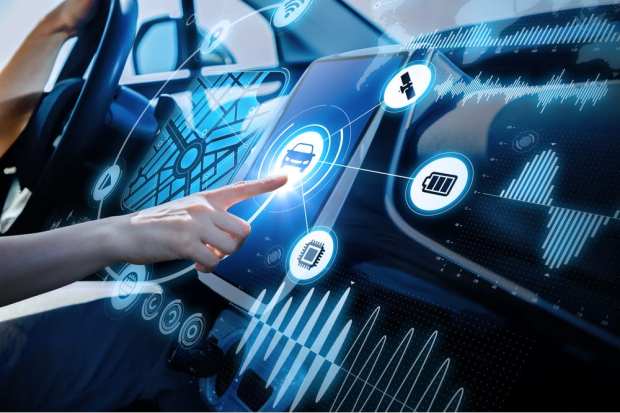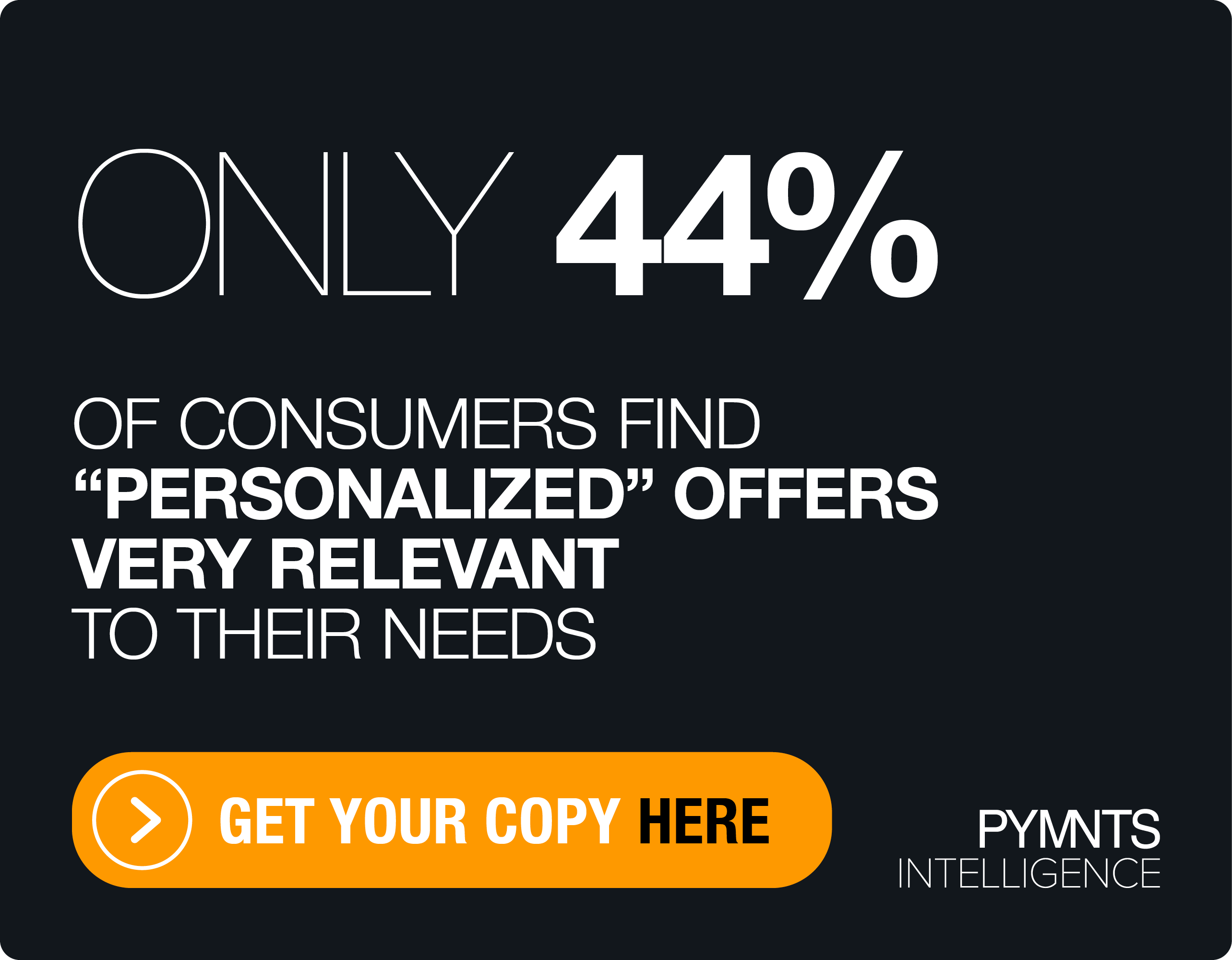The Road Ahead For Connected Car Commerce

The world is changing rapidly. Multi-tasking at the highest levels isn’t just for CEOs or millennials in the “I want it now” era – it’s now common across all demographics.
Enter the car as ecosystem, commerce on wheels, consumption measured by the mile and marked by the odometer.
Multi-tasking while in the automobile makes life more efficient today. OEMs are tweaking their services accordingly, and the impact will change day-to-day life for everyone.
To that end, in a conversation with Karen Webster, First Data executives Jeff Gheraldi (vice president and vertical market leader of auto, internet service providers, media/entertainment and Internet of Things) and Scott MacKay (vice president of the Universal Commerce product team), discussed the nearer-term and longer-term road ahead for connected cars, connected commerce, and the on-the-go consumer.
The conversation took place against the backdrop of the findings of the Commerce Connected Playbook – the Connected Car Edition.
The data shows that overall, amid a $230 billion connected commerce opportunity, drivers in the United States spend a little less than an hour – 51 minutes, to be exact – on their daily commutes to and from the office.
Along the daily grind of navigating traffic – where commuters were once captive behind the wheel – lie opportunities to connect and commence commerce, with as many as 64 million connected vehicles expected to be on the road by the end of this year.
Gheraldi and MacKay said those 51 minutes could be heralded as “the journey” where mobile connectivity, in the words of Gheraldi, helps people recognize what they might need (think: gas) or want (think: coffee or quick service restaurants) along the way.
Across a variety of touchpoints, added MacKay, “there are a lot of opportunities for the merchants – but they have to understand that from the consumer’s standpoint, there are expectations that the merchants will support the connected commerce and connected experience, whether it starts at the home or transitions into the connected vehicle.”
Shaped by interactions with Uber and other platforms, continued MacKay, the consumer expects commerce to be frictionless and time behind the wheel to be productive.
What a Commerce-Enabled Connected Automobile Means
To get to the optimized commerce experience, the technology itself must be ingrained and intuitive.
As Webster noted, there has been an evolution in place, as automobiles have been increasingly coming out of factories with connected operating systems and even pre-installed apps, cementing connected commerce and moving it beyond the smartphone.
“Connecting a vehicle to a wireless network to allow commerce is one thing,” said MacKay, “but it’s another to really have the context of the journey in mind.” Thus, he illustrated, a drive to a sporting event would ostensibly keep in mind traffic patterns and gas stations with the best prices, and could even allow the car to authorize – on the driver’s behalf – a top-off at the fuel tank or (electric) charging station.
Gheraldi noted that during visits with MacKay to automakers worldwide, one common refrain has been how to create ecosystems within the vehicles that prove to be “sticky” while keeping safety and security top of mind. As he told Webster, especially when it comes to commerce, “it is very easy to compromise your payment structure without having the right technologies behind it.” He noted that First Data has been deploying technology that seeks to foster “universal commerce” that works with tokenization to ensure safe transactions.
And with secure transactions in place, the two executives added, the consumer is likely to keep transacting, capitalizing on loyalty and rewards programs. In one example, said Gheraldi, free tire rotations and oil changes can bring connected consumers back to the dealerships where they purchased their vehicles. “Then you get that intimacy between the dealer and the consumer who owns that car,” he noted.
Paying for it All
There are a lot of wallets out there, to be sure, and that means many ways to pay. As Gheraldi and MacKay told Webster, with a slew of payment offerings – spanning Apple Pay, Samsung Pay and a host of others – it remains important to aggregate all those options in one place – a critical consideration that can help merchants drive scale in connected commerce activity.
“It’s far from simple,” said Gheraldi, “because everyone has a specific payment instrument they like the most, and usually it’s tied back to loyalty and rewards. We [at First Data] enable all of that complexity to make it simple, using technology in the automobile like the LTE modem that’s installed in almost every vehicle manufactured today and connected to the cloud via IP, enabled via large-scale carriers like Verizon and AT&T. Those automobiles all of a sudden become connected” through geo-fence technology and Wi-Fi, he added, taking the great work that OnStar and SiriusXM started many years ago to the next-generation technology.
The Emerging Non-Ownership Model
The connected commerce experience, if done well, may find root across a variety of travel use cases and demographics – even if the consumer does not own the connected car. MacKay pointed out that with Uber and Lyft, there has been a shift in the millennial mindset away from ownership.
Yet digital connected commerce is going to be a requirement. In that environment, mobile and apps will synchronize with ride-hailing and will be flexible, no matter who is behind the wheel or in the backseat. Fewer owned cars may mean fewer cars on the road due to ridesharing, but that means, too, more hours of driving time, cumulatively, across vehicles.
Universal Commerce
More hours on the road, plus connectivity, equals the opportunity for merchants to offer “universal commerce” – where, for example, with food (drive-in or mobile order-ahead), the car becomes the restaurant, where streaming media has a captive audience. Everyday spend will drive user adoption, and Gheraldi predicted that adoption is poised to accelerate markedly over the next 18 to 24 months.
MacKay and Gheraldi told Webster that the only thing holding back merchants and automakers from fully embracing connected commerce is the worry around driver distraction and “friendly fraud” in transactions. Those fears should abate as companies like Amazon make strides in voice recognition and identity management through biometrics such as fingerprint and retinal scans.
Said MacKay: “You’ll see this industry take off because the technology exists today. It’s just a matter of putting the pieces together.” He added that in 2020, there will likely be at least a few OEMs releasing connected commerce in the automobile at scale for basic use cases of fueling/charging stations, QSR orders, parking, car washes and monetizing vehicle data.
